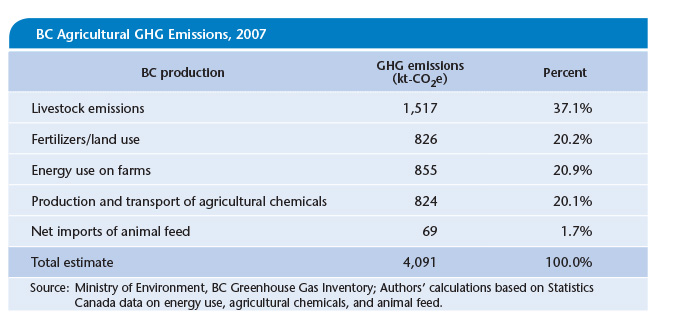Food is an excellent starting point for thinking about social justice and climate change. We all eat, and many of us are aware of trends in food production and distribution, such as organic produce and farmers’ markets. Climate change challenges how we access food, in particular the food we import – currently about half of our food in BC. Food production can also be very intensive in greenhouse gas emissions. Issues of food democracy, such as working conditions for migrant farm workers and hunger, must also be included when rethinking our food supplies.
This module is based on the Climate Justice Project report, Every Bite Counts: Climate Justice and BC’s Food System.
OBJECTIVES
- Students will connect their lived experience to the concept of a food system.
- Students will understand the concept of food democracy and its connection to poverty and inequality in BC.
- Students will understand that food justice includes farmers and farmworkers (especially temporary migrant workers) who do not always receive fair incomes.
- Student will explore how they can apply the principles of food democracy to their school.
COMPONENTS
- Introduction to food systems
- Opinion-o-metre: Food thoughts, equity and access
- Ideas for action: Food democracy in BC schools
CURRICULUM CONNECTIONS
Science and Technology 11; Sustainable Resources 12
Social Studies 8, 9, 10, 11; Civic Studies 11; Comparative Civilizations 12; Geography 12; Social Justice 12
English Language Arts 8, 9, 10, 11, 12; Communications 11, 12
Applied Skills 11; Business Education 8, 9, 10; Economics 12; Home Economics: Family Studies 10, 11, 12; Home Economics: Foods and Nutrition 8, 9, 10, 11, 12
Planning 10
TOTAL SUGGESTED TIME: 2 hours
RESOURCES REQUIRED
- Digital projector and computer
- Whiteboard/chalkboard and markers/chalk
- Large pieces of paper and markers
- PowerPoint slides: Reimagining our Food System
 Part 1 – Introduction to food systems
Part 1 – Introduction to food systems
READ ALOUD: Today’s topic is “reimagining our food system.” A food system is comprised of all elements of food production and distribution from farm to fork, including farmers, other workers and consumers.
ACTIVITY: Mind mapping the concept of “food systems”
- Question: Based on your own experience with food, what words come to mind when you hear the phrase “food system”?
- As a class, create a mind map on the board, making connections as they arise. This could include: organic farming, farmers’ markets, community-shared agriculture, junk food, compost, 100 mile diet, food banks, soup kitchens, cafeterias, community gardens, etc.
 Part 2 – Opinion-o-metre: Food thoughts, equity and access
Part 2 – Opinion-o-metre: Food thoughts, equity and access
ACTIVITY: Opinion-o-metre
An imaginary curved line is drawn across the floor; one end is designated as ‘strongly agree’ and the other as ‘strongly disagree’. Students listen to statements about food issues and place themselves along the line according to their position or reaction to each statement. For each statement, ask a variety of students across the spectrum of agreement/disagreement to share their thoughts. Make sure to hear from a range of opinions/voices. Allow 4-6 minutes per statement (or more if necessary). Over the course of the discussion, if their opinion on a statement changes, students are free to change their location along the continuum. You can share the information that follows each statement after students have voiced their thoughts. Feel free to select or omit statements as appropriate.
Opinion-o-metre statements:
Test statement: “Dogs are much better pets than cats.”
“People’s access to healthy food in BC is something we should all be concerned about.”
- Food bank use in Canada increased 2.1% in 2011, and was 31% higher than 2008.
- The use of meal programs (soup kitchens, shelters, school initiatives) increased 23% percent between 2011 and 2012.
- People need to earn a living wage so they can purchase the food they need.
“Food production doesn’t contribute that much greenhouse gas in the big scheme of things.”
- A report from Greenpeace International estimated GHGs from agriculture at between 17% and 32% of global emissions, when land use changes are included.
“My family would be willing to pay a little more for food if it meant we were supporting local farmers and businesses.”
- Supporting local food producers keeps money in the local economy.
- BC has lots of small farms – about 20,000 in all.
- Buying locally reduces the need to transport food long distances.
“Organic produce is better for both you and the environment, even if it costs more.”
- The high cost of buying organic food is challenging for low-income families.
- Building stronger networks for small organic farmers to distribute their produce would lower costs (e.g. selling in bulk to schools).
- Because organic foods do not use fertilizers made from fossil fuels, they have a lower GHG footprint.
“BC should produce more of the food British Columbians eat.”
- BC imports about half of its food, mainly from California, a region already experiencing drought due to climate change. California may not be able to produce as much food for export to BC in the future.
- Climate change disruptions in the future may affect our access to food, in terms of supply and price. Risk factors include things like droughts, floods, insect infestations, excessive heat or extreme weather events like hail storms – all things farmers have always contended with that may occur more frequently due to global warming.
- BC has an extensive Agricultural Land Reserve – this is land set aside for farming, although not all of it is under cultivation.
- On the other hand, relying 100% on BC food production could increase the province’s vulnerability in the case of natural disasters on the home front (e.g. a big hail storm in the Fraser Valley at harvest time).
“BC farmers and farm workers make decent incomes.”
- In supply-managed parts of the food system, where there are restrictions on the amount of food produced (dairy, eggs and poultry), consumers pay higher prices, but this means farmers can make a good living. In other areas of the food system this is not the case, and farm incomes are generally quite low.
- BC has an increasing number of temporary migrant farm workers – about 5,000 in 2013. These workers are often paid poorly, are forced to put up with difficult working and living conditions and don’t have the same employment standards as other industries, leaving them vulnerable to exploitation.
 Part 3 – Ideas for action: Food democracy in BC schools
Part 3 – Ideas for action: Food democracy in BC schools
QUICK PAIR-SHARE QUESTION: For whom is access to good quality food particularly difficult? Why?
- Low-income earners and others who experience poverty. Some groups are disproportionally affected by poverty, such as single-parent households, recent immigrants and refugees, First Nations peoples, people with disabilities and elderly people. BC has the highest child poverty rate in Canada.
- Important note: Most people who live in poverty in BC have jobs, but their jobs don’t pay enough to cover the cost of living.
- Good quality, healthy food (especially organic food) is often more expensive than other options. People with higher incomes don’t experience the same financial pressure as people living in poverty, and their food costs are a smaller part of their overall income.
READ ALOUD: “Food democracy” has emerged as a concept in response to unequal access to healthy food, as well as to the contrast between people working in the food industry and the people who benefit from it.
The CCPA report Every Bite Counts defines food democracy as “ensur[ing] that all have access to affordable, decent, health-enhancing food.” In this way, food democracy:
- Challenges the corporate structure and control of food, and advocates for grassroots and community control of food systems.
- Stresses “decency and social justice in the food system’s wages, and working conditions.”
- Recognizes environmental sustainability as an aspect of food democracy.
ACTIVITY: Mapping your school’s food system
Students sit in small groups with a large piece of paper and some markers.
First, ask each group to describe and draw a representation of their school’s food system – all the points where students come into contact with food at school (refer back to the mind map in part 1 if necessary). This could include cafeterias, hot lunch programs, school garden, composting, food classes, vending machines, student fundraisers, etc.
Next, ask students to describe how these food contact points within the school could be reimagined with food democracy in mind.
Ask each group to report back to the class about their discussions. This might include: expanding or starting school gardens to feed into the cafeteria and food lessons, including composting of organic materials; buying food sold at the school from local farms and asking the farmers to come speak to students about it; etc. Keep track of students’ ideas for enhancing food democracy within the school’s food system – you may want to return to them at the end of the unit.
Activities for further exploration
- Take a field trip to a local farm or farmers’ market.
- Have a local farmer come in and speak to the class.
- Do a project on how to make balcony/backyard gardens.
- Create or expand a school or community garden.
- Create a poster to inform the community about food democracy.
Additional Resources
- Every Bite Counts: Climate Justice and BC’s Food System
- Cultivating Farmworker Rights: Ending the Exploitation of Immigrant and Migrant Farmworkers in BC
- Cool Farming: Climate impacts of agriculture and mitigation potential
Local Food
- BC/Canada
- Lower Mainland
- Interior/Northern BC
- Vancouver Island
School and community gardens






